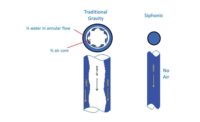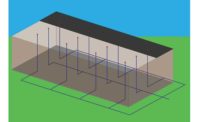All too many times a bid is turned in only to be told, “We need to look at VE options.” There are plenty of mechanical units that can be downgraded, architectural features that can be sacrificed, or peel back every division to see what can possibly be optimized for that extra dollar.
Siphonic storm drainage brings a number of benefits to a project, most notably cutting the storm pipe diameter in half by eliminating air from entering the pipework. Following the exact routing a gravity storm system takes, siphonic storm drainage will always deliver cost savings along with a technical and design benefit.
On the labor end alone, the ability to install pipes that are half the size is enough to warrant looking at how a siphonic system affects the project budget numbers compared to a traditional gravity system. However, only thinking about the smaller diameter pipe savings is standing too close to the forest to see the trees.
The second major benefit of siphonic storm drainage is that the pipe runs with zero slope. The designer can now collect all the roof drains on the top floor and route everything to one vertical riser. A gravity system requires multiple risers dictated by pitch, once the pipework crosses into livable space, a vertical riser is needed. This inhibits design flexibility.
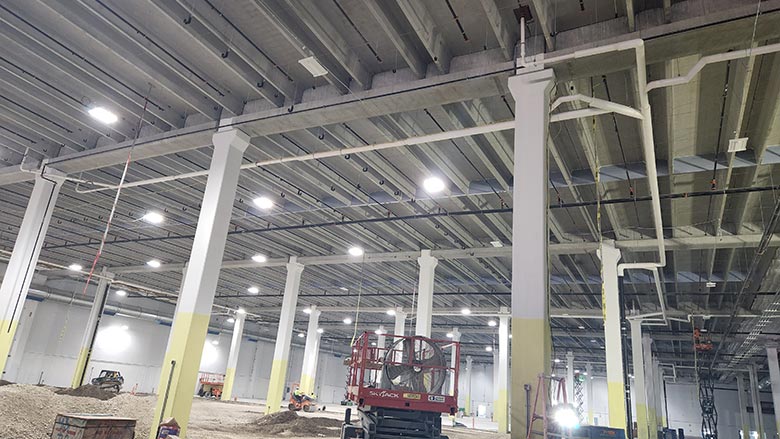 Prologis, one of the biggest warehouse developers in the country, chose siphonic storm drainage for this new building, which is ultimately being leased to Amazon in Miami.
Prologis, one of the biggest warehouse developers in the country, chose siphonic storm drainage for this new building, which is ultimately being leased to Amazon in Miami.
Not only are the number of vertical risers cut down with siphonic drainage, but also the number of civil connections. The designer has the ability to route all the storm pipe to one side of the building, completely eliminating the cost to run the civil pipework to the backside.
Using a siphonic system produces material savings from all the pipe, fittings, couplings, hangers, insulation and manholes no longer needed and the labor savings is even more substantial, eliminating the need to bore holes in the floor, set the fire caulking, install the pipework, secure the bracing, plus trench, install and rebury the civil connections headed to the building.
Everything discussed so far is mainly concerned with savings inside the building. The last major benefit of Siphonic Storm System is that the pipework also runs with no slope in the groundwork. When the plumbing scope and civil scope can be connected (owner, developer or GC) the VE begins compounding the second the siphonic system extends more than 5 feet outside the building footprint.
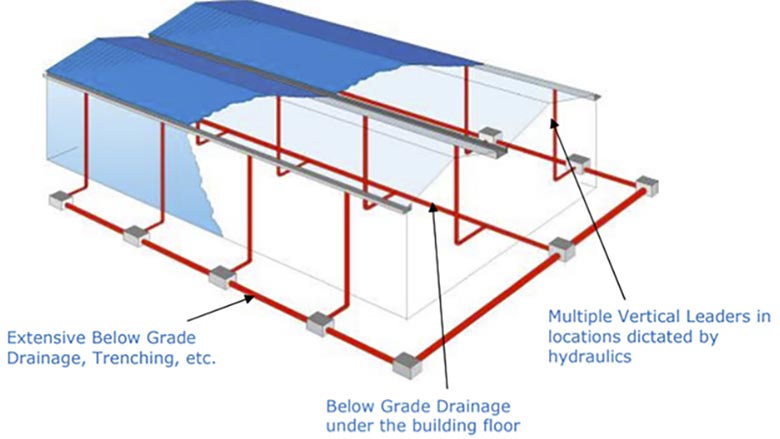 Schematic diagram of a gravity drainage installation with multiple downpipes.
Schematic diagram of a gravity drainage installation with multiple downpipes. 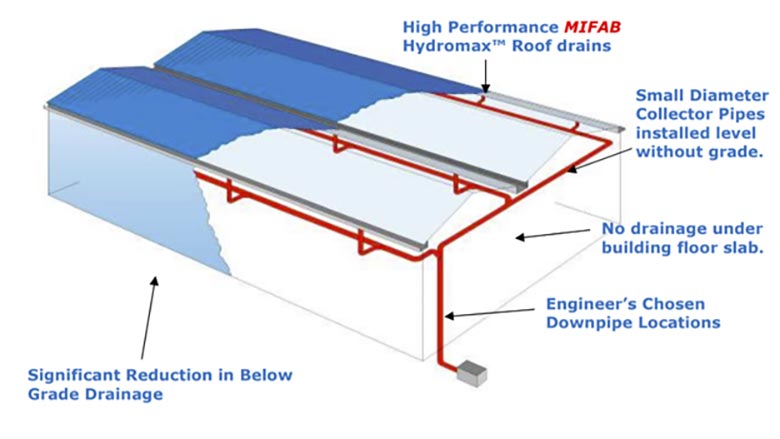 Typical diagram of a siphonic drainage installation with minimum downpipes.
Typical diagram of a siphonic drainage installation with minimum downpipes.
Civils. Civils. Civils.
In a normal scenario, the storm pipe comes outside of the building at the height gravity dictates. For siphonic drainage, the designer can identify their elevation. Here are the new opportunities to save on civil scope as a result of siphonic storm drainage:
- Elimination of total amount of trenching: Instead of exiting the building to make multiple manhole connections, those unneeded connections can be reduced all the way down to one;
- Elimination of pipe diameter: Siphonic pipework can travel all the way to the manhole (MAX distance possible based on building height);
- Elimination of trenching depth: Pipe stays at a constant depth;
- Elimination of trenching width: Half the pipe diameter; and
- Elimination of excavation requirements: Manhole needs less bury depth as the discharge will connect at a higher point.
Eliminating all these things saves calendar days. Less material reduces labor requirements, less coordination leads to fewer conflicts and smaller pipe allows for ease of installation to lay more pipe length per given day.
For an owner, developer, general contractor or any entity that can affect both the plumbing and civil scope — siphonic drainage is the smart play.
On the reverse to keep you thinking, if your competitor starts using siphonic drainage as part of their design bid package, how would your bid compete using traditional gravity?
MIFAB has a full-time design assist team that can help create, design, and balance siphonic systems for any current project. To submit a project for our team to provide a budget please visit: www.mifab.com/SiphonicDSForm.
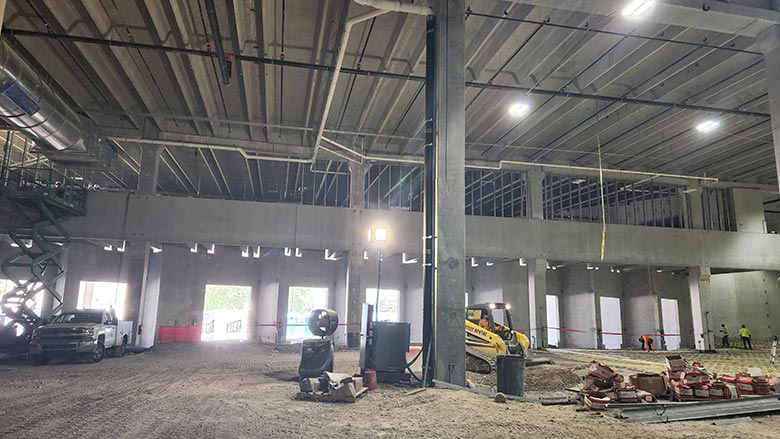 A Miami, Florida, warehouse is outfitted with a siphonic storm drainage system with MIFAB products.
A Miami, Florida, warehouse is outfitted with a siphonic storm drainage system with MIFAB products.


